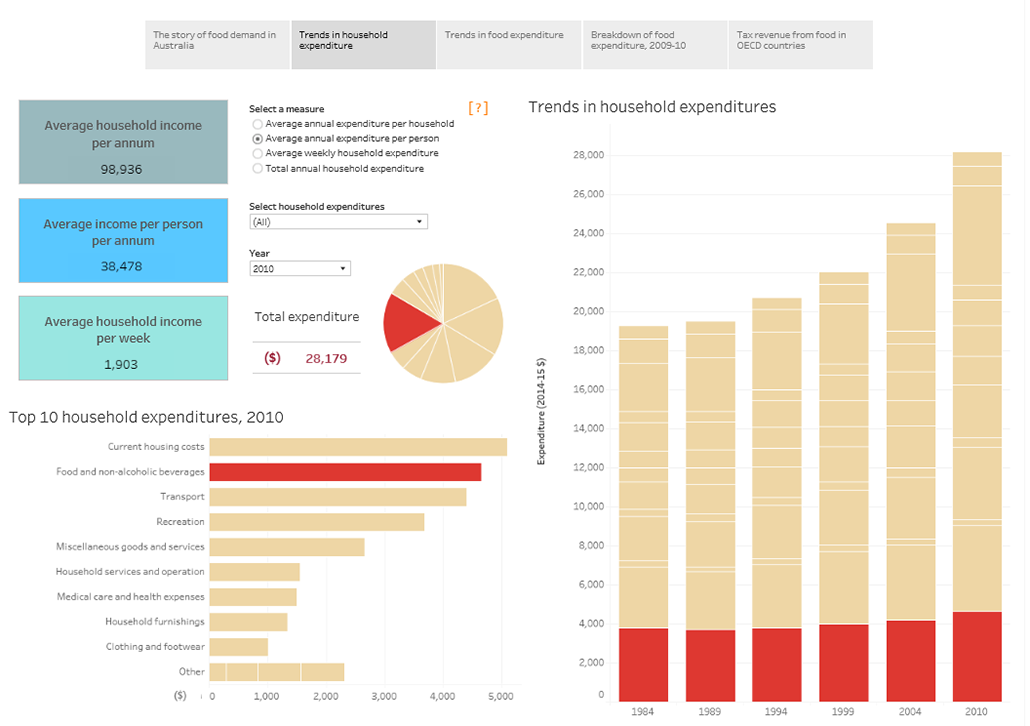Author: Lindsay Hogan

In recent years, ABARES has undertaken research programs that focus on two key economic aspects of Australia's food exports: world food demand to 2050 and implications for Australia’s food exports; and the efficiency of Australia’s infrastructure and food export supply chains.
To complement these research programs, Food demand in Australia: trends and food security issues examines trends and issues in Australia's food market with a focus on domestic food demand.
[expand all]
Key Issues
- The domestic market is important for Australia's food producers including farmers, food processors and food service providers. By value, around two-thirds of Australia’s food production is used in the domestic market. Food imports have become more important, particularly for processed food, but still account for a relatively low share of household food consumption (15 per cent in 2015-16).
- Food is a major expenditure category for households in Australia-current housing costs, food and transport are consistently the three top expenditure categories (based on data from the 1990s and 2000s). The three top food expenditure categories are: meals out and fast foods; meat, fish and seafood; and fruit and vegetables.
- Food expenditure per person tends to be higher, on average, for households with higher incomes - notably, the share of total food expenditure spent on meals out and fast foods is significantly higher for households with higher incomes. By contrast, the distribution of food expenditure is broadly similar across household groups based on net worth - that is, households with high net wealth spend relatively more on food in aggregate, but the shares spent on the main food categories are broadly similar.
- The food industry supplies a broad range of food products and services in response to food demand in different segments of the domestic market. There is ongoing innovation by the food industry to increase the efficiency and effectiveness of the food supply chain, including to enhance further Australia's high level of food security. For example, major food retailers have developed product lines to sell imperfect fruit and vegetables at lower prices (such as The Odd Bunch at Woolworths, and Imperfect Picks at Harris Farm Markets). Patterns of food expenditure indicate there are also likely to be ongoing economic opportunities to obtain a price premium for reliable food quality attributes.

